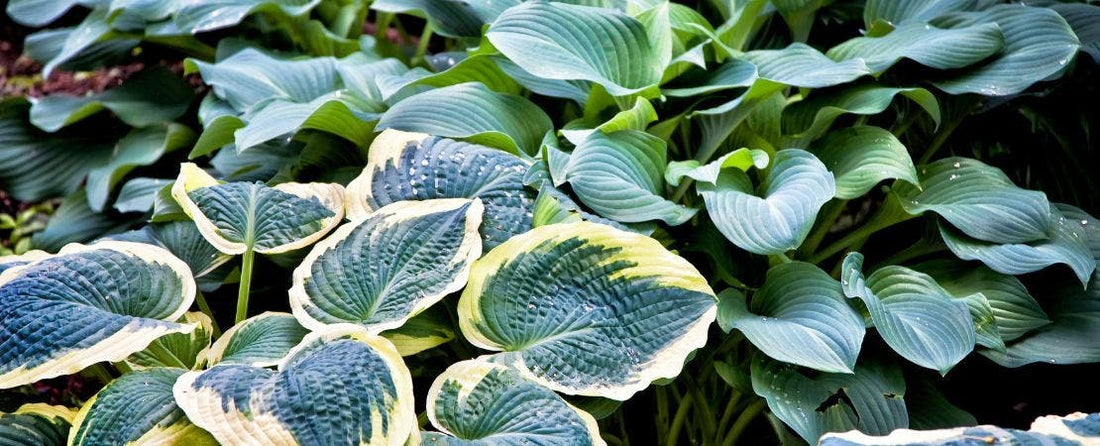Growing Hostas: A Planting and Care Guide

The Ultimate Guide to Hosta Plant Care: A Horticulturist's Perspective
Hostas, often referred to as Shade or Plantain Lilies, are a cornerstone of shade gardens, offering lush foliage and striking variegation that adds interest to shady garden corners. If you're a gardener who appreciates low maintenance plants, you'll cultivate a deep appreciation for these hardy perennials. Learn about the process of growing hostas to ensure these garden favorites can be enjoyed with minimal care. From selecting the right varieties to planting and ongoing care, this guide is designed to help gardeners successfully integrate hostas into their garden landscape.
Choosing Your Hosta Varieties
Hostas come in an astonishing range of sizes, colors, and leaf patterns, making them incredibly versatile for garden design. When selecting hostas, consider the mature size of the cultivar, as well as the leaf color and texture, to complement your garden's aesthetic. Blue-leaved varieties thrive in deep shade, adding a cool tone to the understory, while yellow and gold leafed types can bring a luminous quality to darker areas and even tolerate more sunlight.
Tips for Planting Hostas
Planting Site
One of the best plants for shaded areas, hostas thrive in a variety of conditions, ranging from full shade to partial sun. However, to prevent scorching of foliage in areas of direct sunlight, plant hostas in partial or dappled shade. Ideally, the site should receive at least four hours of morning sunlight. Individual varieties, with blue, green, and variegated colors, may have specific requirements, so get to know the sun and shade preferences of the specific hosta type you choose.
Soil Requirements
Hostas are widely tolerant of soil types but do best in loamy, well-drained soil. Incorporate generous amounts of humus in the soil, especially those on the limy or alkaline side. The soil should not be allowed to dry out completely, particularly in sunnier locations.
How Far Apart to Space Hostas When Planting
Hostas can grow up to two feet wide, and some varieties can grow up to three feet tall. Thus, set plants 15 to 30 inches apart, depending on the ultimate size of the cultivar or species. For very dwarf kinds, plant them 9 to 12 inches apart.
When to Divide and Plant Hostas?
Plant hostas during early spring or early fall. These seasons provide the ideal conditions for establishing and growing new hosta plants.
Hosta Care
While hostas are primarily valued for their foliage, they do bloom. Removing spent flowers can help redirect the plant's energy back into leaf development. In autumn, clear away any dead foliage and trim flower stems to deter pests. You can divide hostas to expand your garden and share with friends. To divide, pull apart clumps with your hands, or use a clean, sharp knife to slice crowns away from the mother plant (see instructions below). Divide hostas in early spring or fall. A method for dividing hostas that is easy to remember? Cut clumps into thirds or fourths and replant those pieces.
Watering Hostas
Water your hostas two to three times a week during the growing season, aiming for at least one inch of water each week. Make sure that the soil is consistently moist, but not wet or waterlogged. Avoid overhead watering, as excess moisture can lead to slug problems.
Do Hosta Plants Need Mulching?
Apply a winter mulch during the first winter to prevent heaving of unestablished plants as a result of alternating freezes and thaws. Mulch also helps to suppress weeds and retain moisture in the soil during the growing season. Apply a 2-3 inch thick layer of organic matter, such as bark, pine needles, or shredded leaves, around the plants, making sure not to bury the crown.
Feeding and Nutrients Your Hosta Needs
Incorporate organic matter, such as compost, leaf mold, or well-rotted manure, into the soil each year. This step provides essential nutrients to promote healthy growth. Additionally, consider using a slow-release, balanced fertilizer early in the growing season as per instructions.
Ongoing Care and Maintenance
While primarily grown for their foliage, hostas do flower. Remove flowers as soon as they finish blooming to direct the plant's energy towards foliar development, as opposed to seed production. Each autumn, remove dead or yellowed leaves and any remaining flower stems to reduce areas where slugs and snails could shelter over the winter.
Do Hostas Need Pruning?
Though hostas do not require pruning, trimming off any spent flower spikes will make the plant look neater.
Winter Care
In the late fall before the first frost, remove and dispose of any dead foliage. Cover the ground with a mulch of pine needles, bark, leaves, or straw to protect the roots throughout the winter.
Common Pests
Slugs, snails, and aphids are some of the common pests that can affect Hostas. Encourage beneficial insects such as ladybugs, lacewings, and praying mantis, and quarantine diseased plants to prevent the spread of disease. Interventions such as pheromone traps and slug baits can also be effective.
Hostas are a testament to the beauty and resilience of shade-loving plants, offering diverse colors, textures, and sizes to the garden. By selecting suitable varieties for your space, providing the right conditions, and adopting organic care practices, you can enjoy the lush, leafy splendor of hostas.



